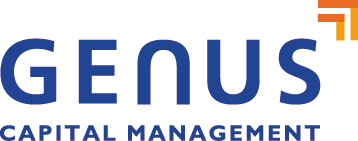Friday Market Insights – Oil consumption peaks as energy consumption grows, with Tom Holloway and Justin Hahn
This week's questions:
[00:28] : How was the week and what was new this week for you in the markets?
[01:23] : One of the ways we carve it up is we talk about value versus momentum and other things. What are you and the team seeing there and what are we up to in the portfolio?
[02:38] : it’s the Black Friday edition today. What does that mean for us in the market? Are you already seeing any reports on how it’s going or?
[03:51] : I wanted to chat about the moves in the yield curve and bond market in general, like what’s what’s new there and what’s going on in our portfolio.
[05:43] : We talked about bonds. One place to go where there’s some real action this week is a commodity market. Can you put that in context and maybe talk about that outlook a little?
[06:47] : Is the traditional energy space is probably getting a tailwind from higher oil prices, but so is the alternative energy space. Do you see a conflict there?
Thomas Holloway: [00:00:05] Hello and welcome, everybody, to the Genus Friday Market update. Today’s November twenty seventh. And this is our Black Friday edition. My name is Thomas Holloway and I’m a portfolio manager.
Justin Hahn: [00:00:16] My name is Justin Hahn and I’m a macro research analyst.
Thomas Holloway: [00:00:20] Great. Thanks for joining us, Justin. And once again, to the viewers, I want to start off with the same question we always start off with, which was how was the week and what was new this week for you in the markets?
Justin Hahn: [00:00:32] Yeah, so this week was quite quiet due to the US holiday and the market closures on Thursday and a half day today, we saw some economics coming out, such as the consumer sentiment as well as the housing data. But they were a bit weaker than expectations. And we also saw some weekly job numbers rise a bit higher than expectations due to the second wave fears and the ongoing second wave in many states. And overall, to the stock market kept treading slightly higher with it, sitting around the all time highs.
Thomas Holloway: [00:01:04] Right. Thanks for all that, that sounds like a lot for a quiet week. So, yeah, speaking of some of the other analysis that we do, we love talking about our process. And part of that process is looking at stock selection in terms of style factors. So there’s different ways to carve out the equity market. One of the ways we carve it up is we talk about value versus momentum and other things. What are you what are you and the team seeing there and what are we up to in the portfolio?
Justin Hahn: [00:01:33] So this week, we saw quite a bit of a bounce in the value stocks on the back of vaccine news, so this month saw the moves we have made are more of selling the covid winners, such as mainly in the technology sector. And we started to switch more into the economic sensitive names in the industrials, financials, energy and materials sector. Again, this was back on the vaccine news that we saw a lot of positives there at the beginning of the month. In addition to more value names, we’ve also seen the Russell two thousand index, which is the SmallCap index, outperformed significantly as well.
Thomas Holloway: [00:02:07] Yeah, it’s true. The it seems like a while ago now, but I guess only a few weeks ago we had the election and then this the first Pfizer vaccine announcement. And there’s been several other announcements since then. That was really a turning point for some of the internal dynamics in the market. And that’s exciting to hear. I think it’s positive overall and also really interesting to see that like the Genus investment team has been on top of it and making those changes accordingly. All right, well, here’s a fun one I mentioned, it’s the Black Friday edition today. What does that mean for us in the market? Are you already seeing any reports on how it’s going or.
Justin Hahn: [00:02:47] We saw a lot of retailers start their sales a lot earlier and have extended it to more or less at the end of the month or even further along. There’s been a lot of pent up demand on the demand side from consumers as they haven’t been spending on leisure and travel. And as a result, we’ve seen savings rates rise significantly, which usually doesn’t happen during normal economic times. So many people are just ordering the necessities that they need, as well as the only big purchases we were seeing were just more work from home equipment.
Thomas Holloway: [00:03:18] Ok, that’s so a continuation of the trend. We’ve been talking about that, but it’s kind of a, I guess, the silver lining of the stay at home, don’t travel, don’t go to restaurants. People at least who do still have a job are actually, as you said, accumulating savings. I saw an exciting headline that they’re referring to this as the savings bomb. And at some point, you know, people are going to want to spend that money. I’m not sure if if today’s sales are the catalyst for that or maybe we have to get closer to a reopening. But there’s definitely some some discretionary spending available when the time is right. I wanted to chat about the moves in the yield curve and bond market in general, like what’s what’s new there and what’s going on in our portfolio.
Thomas Holloway: [00:04:01] So this week, we saw a lot of the bond yields move upwards on the vaccine news, similarly to the value stocks and the small cap stocks that we’ve seen outperform due to the anticipation of a stronger economy. We saw a 10 year bond yields in the U.S. almost touch one percent briefly, but that strength faded into the end of the month. However, it’s still trending upwards overall. We also saw, in addition to this, the yield curve, which is the 10 year bond yields and the two year bond yield difference between those two steepened during the period to about zero point seven percent. This is around twenty eighteen levels, which is very positive for the markets. With all the positive news of the vaccine going into the rest of the year, we still continue to see more strength in this in the bond yields and see it going up, but albeit at a very slow trend, depending on how the vaccine plays out and how long it takes for the rest of the economy to to open up.
Thomas Holloway: [00:04:56] Right. And just to tie that back to client portfolios.
Justin Hahn: [00:05:00] Yeah, so in terms of client portfolios, due to the increase in yields, we have been overweight more of the spread product such as corporate bonds and other high yield products with our global macro bond fund, as well as being short duration during this time.
Thomas Holloway: [00:05:15] Great, perfect. Yeah. This time last year we were talking about the inverted yield curve and potentially that means that the yield curve is signaling a recession. It’s kind of incredible. But of course we did get the recession, but for for a very surprising and different reason. So anyway, yeah, definitely the yield curve is starting to bounce back up again. The short rates are staying where they are and the long rates are starting to creep up a little bit. OK, we’ve talked about stocks. We talked about bonds. One place to go where there’s some real action this week is a commodity market. Can you put that in context and maybe talk about that outlook a little?
Justin Hahn: [00:05:53] Yeah. So along with the bond yields and the value stocks, we also saw oils, oil prices rise. This, again, is due to more positive sentiment regarding the economic recovery. In addition to this, some of this move could be also tied towards the Biden victory. This is because Trump has been very loose on oil regulations. But with Biden, he’ll probably reregulate the industry, which will be lower supply. Again, that will increase prices and more anticipation regarding that as well.
Thomas Holloway: [00:06:22] Supplies tighter means prices would go higher. So, yeah, related to that, of course, is the other boom right now is alternative energy. Genus has been pretty active investing in that space. And I’ll just go ahead and say that that space is still on fire. Stocks are going up a lot, and the economics of that sector has suddenly become extremely competitive with more traditional sources. But I guess the question is the traditional energy space is probably getting a tailwind from higher oil prices, but so is the alternative energy space. Do you see a conflict there?
Justin Hahn: [00:06:56] Not too much conflict per say in terms of renewables, investors need to more think of this as a longer term play and a longer term investment. The cost of renewable energies are dropping almost exponentially. So it will be almost the lowest cost energy across the board for most parts of the world. Also on the demand side, it’s also increasing quite significantly at a rapid rate from different things, from demands from different countries, as well as more money actually being flowed into there with more government programs aimed at targeting renewable resources and helping those industries out. And so over the last twenty two years as well, investing in the TSX and S&P 500 without fossil fuels has outperformed the index actually with fossil fuels. So it’s more of a longer term play in a longer term switch into the renewable space.
Thomas Holloway: [00:07:51] Yeah, great, that’s good context. I mean, we do see the headlines that, you know, we’re at maybe peak peak oil consumption, peak oil demand. But you said something interesting that we’re not talking about peak energy demand. If we if we add in all the other sources of energy that we are now going to be consuming, it’s certainly the case that global demand is nowhere near peaking and probably won’t. Great, well, that’s all the questions for today. Thank you very much, everyone, for watching. Have a great weekend. And feel free to reach out to your portfolio manager if you have a question for next week’s video or just have a question on anything else. Thank you and have a great day.
Justin Hahn: [00:08:31] Thanks, everyone.











